![]()
 The Slat al-Azama or Lazama synagogue in Marrakesh was founded in 1492, which suggests that its founders were the Sephardic Jews expelled from Spain in that year. Today, the synagogue stands on Talmud Torah Street in the Mellah, the Jewish quarter, but it was not originally built there. How can this be? No, they did not move the synagogue there, but the Jewish quarter here. In 1557, the then-enthroned Saadi dynasty began the construction of “Renaissance” Marrakesh by building a beautiful mosque in the middle of the bazaar and surrounding it with a comprehensive urban development, the wealthy Mouassin district. And for the Jews living there up to then, they created the Mellah here, around the Lazama, right next to the royal palace: partly for a more effective protection, and partly so that the sultan would always have the inexhaustible wallet at hand.
The Slat al-Azama or Lazama synagogue in Marrakesh was founded in 1492, which suggests that its founders were the Sephardic Jews expelled from Spain in that year. Today, the synagogue stands on Talmud Torah Street in the Mellah, the Jewish quarter, but it was not originally built there. How can this be? No, they did not move the synagogue there, but the Jewish quarter here. In 1557, the then-enthroned Saadi dynasty began the construction of “Renaissance” Marrakesh by building a beautiful mosque in the middle of the bazaar and surrounding it with a comprehensive urban development, the wealthy Mouassin district. And for the Jews living there up to then, they created the Mellah here, around the Lazama, right next to the royal palace: partly for a more effective protection, and partly so that the sultan would always have the inexhaustible wallet at hand.
The Jews resettled here were mainly Berber Jews, the oldest Jewish inhabitants of Morocco, about whom I have written before. Today, a photo exhibition organized in the synagogue’s former yeshiva testifies to their traditional culture, and especially to their schools active in the villages of the Atlas. These often employed Ashkenazi Hasidic rabbis as teachers who settled in Morocco from the 19th century, and they were financially supported by French Jews from the early 20th century.

The synagogue, which is the only functioning synagogue in Marrakesh after the aliyah of the 1950s and 1960s, is no longer a reminder of those times. In the 1930s and 1990s, it was renovated with the support of American and Israeli Jews,in the uncharacteristic modern style usual there.
In these months, this Jewish mix is enriched by a new, exotic shade. In two rooms of the yeshiva, a photo exhibition was opened from the pictures of Dorit Lombroso from Israel, which presents a very interesting Jewish group from India, the Bnei Menashe, the sons of Menasseh.
 Menasseh’s sons, writes the exhibit’s introduction, live in North-East India, in the swampland between Mizoram and Manipur. They speak various versions of the local Tibeto-Burman languages. Before the 19th century, they were animists and feared bounty hunters. They were converted to Christianity by British missionaries, and from the parallels between their own mythology and the Bible, they came to the conclusion that they were actually Jews, and that their mythical ancestor, Manmási, was none other than Menasseh, the son of patriarch Joseph.
Menasseh’s sons, writes the exhibit’s introduction, live in North-East India, in the swampland between Mizoram and Manipur. They speak various versions of the local Tibeto-Burman languages. Before the 19th century, they were animists and feared bounty hunters. They were converted to Christianity by British missionaries, and from the parallels between their own mythology and the Bible, they came to the conclusion that they were actually Jews, and that their mythical ancestor, Manmási, was none other than Menasseh, the son of patriarch Joseph.
That’s it for the introduction. However, Israeli anthropologists * also add that the main evidence forthe parallels was that in 1951, one of the leaders of the then already Christian Mizo-Kuki-Chin tribes had a dream revealing him that his people came from Israel. With his followers, he founded a syncretic Presbyterian revival movement that recognized Jesus as the Messiah, but adopted several precepts of Jewish law and also incorporated many elements of pre-Christian local folklore into its cult.
The awakening to Jewish roots, writes Shalva Weil, probably would not have happened without the British Christian missionaries, who, wherever they appeared in the 19th century, tried to show out the traces of the “ten lost Jewish tribes” displaced by the Assyrians in the local population. Their most spectacular achievement is the Mormon Church, which, according to the self-produced second season of the Bible, The Book of Mormon, is descended from the ten tribes that fled to South America. It is quite ironic that the Mizo-Kuki-Chin tribes found their own Jewish identity through the guidance of lunatic Christian missionaries.
The movement would probably have remained a local Protestant cult, had Rabbi Eliyahu Avichail, the founder of the Amishav organization working to resettle the lost Jewish tribes to Israel, not noticed them in 1983. Rabbi Avichail learned about the sensational discovery from a Mizo insurance agent, and he immediately traveled to the scene. During his local research, he found that the local legends in fact contain some elements that can be paralleled with the Bible. Based on these, he willingly recognized the ethnic group as Jews and introduced orthodox Jewish teachings among them. He even obtained money – from fundamentalist Christian organizations working to promote the Second Coming – to settle them in Israel, but the Israeli government did not recognize Menasseh’s sons as eligible for aliyah.
In the meantime, as it usually happens, another Jewish organization, Shavei Israel, was also created to repatriate the lost tribes under the leadership of Michael Freund, a columnist for The Jerusalem Post, and the two men deadly fell out with each other. This was also facilitated by the fact that Menasseh’s sons also quarreled with each other regarding the leading clans – if nothing else, this is a strong evidence for their Jewishness. By 2005, Shavei Israel had Shlomo Amar, the Sephardic Chief Rabbi of Israel, declare the Jewish descent of this ethnic group and its eligibility for aliyah. From then on, about 3000 of the movement’s members moved to Israel, where they were sent to Gaza and the occupied territories in the West Bank as Jewish settlers, to increase the Jewish population, for bullet catchers and, lacking other professional qualifications, for soldiers. This was probably the main motivation for right-wing Jewish politics to recognize the Mizo-Kuki-Chin as Jews.
There were also many opponents of the recognition. DNA tests carried out in the meantime and Israeli academics both testified against the group’s Jewish origins. The local Presbyterian church and Hindu organizations, the other Mizo-Kuki-Chin tribes who deny that Menasseh’s sons are different from them, and the Indian government, which looks suspiciously at another outward-looking people in the border region already plagued by numerous separatist movements, have raised their voices against the local proselytizing activities of the Israeli rabbies.
Dorit Lombroso’s photos definitely cast their vote in favor of the group’s Jewishness. The photographer captures the bearers of exotic Jewish blood renewal in the style of the orientalizing-idealizing soft porno portraits known from her site. In the bosom of unspoiled nature, the young swampland Jews perform the ceremonies of Judaism or their own traditional works that can be paralleled with biblical Jews, in their most beautiful clothes – which are often so new that they are probably costumes borrowed for the occasion – and in front of beautiful settings, rich fabrics, piles of holy books and carefully installed objects of the tradition. Serious-looking boys and girls with eyes cast into the future, dancing in fields of flowers and under blossoming trees, practicing traditional male and female roles. A growing generation of Jewish settlers. It’s like seeing propaganda photos of the settlement to Palestine from the 1920s and 1930s. And that is probably the case.



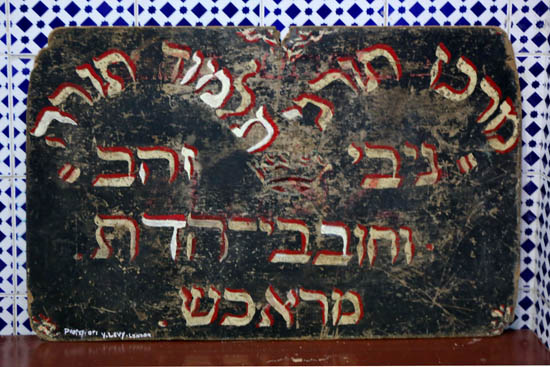
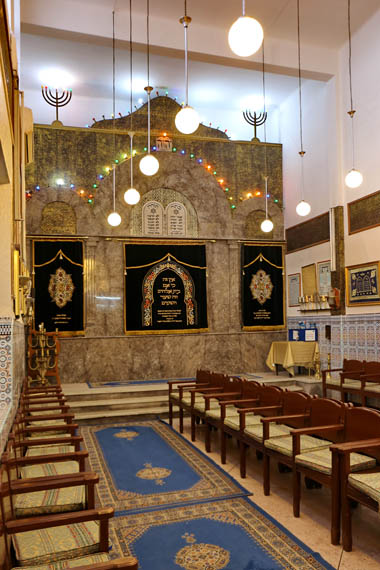
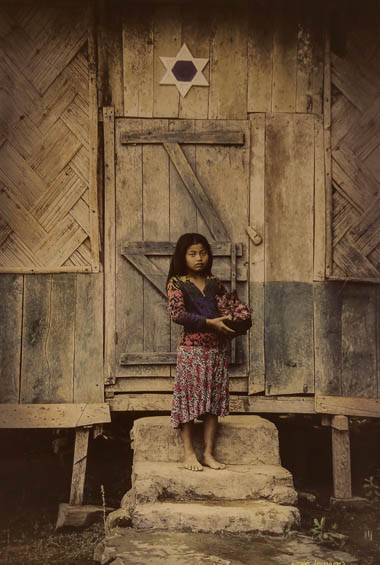
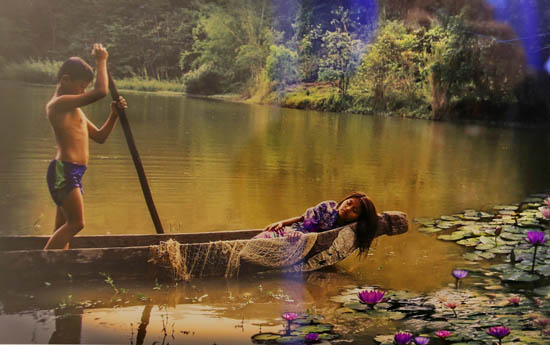
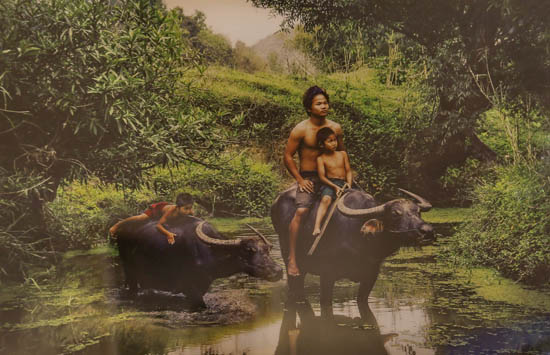
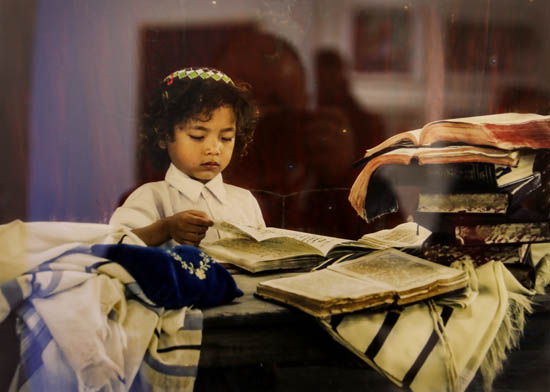
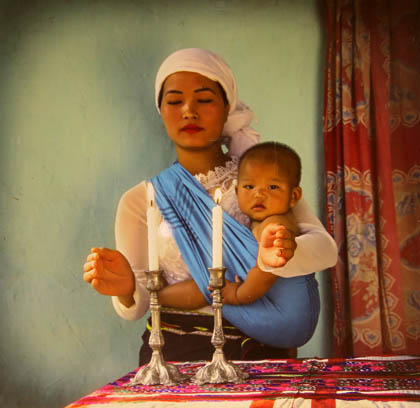
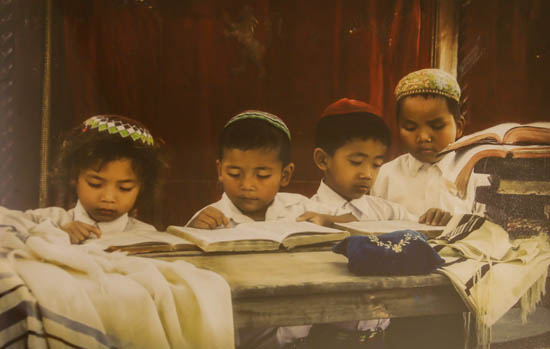
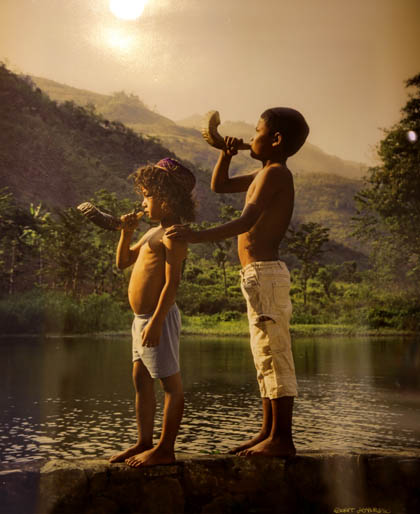

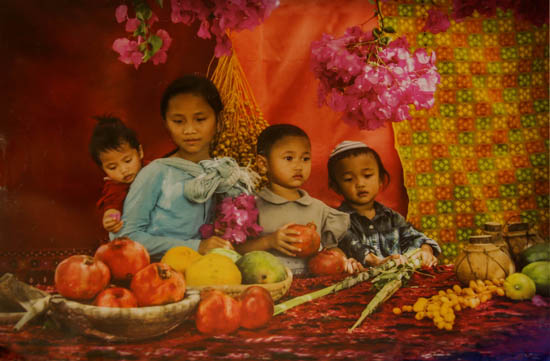
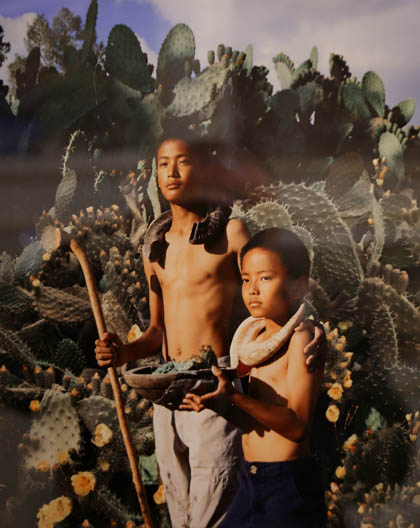
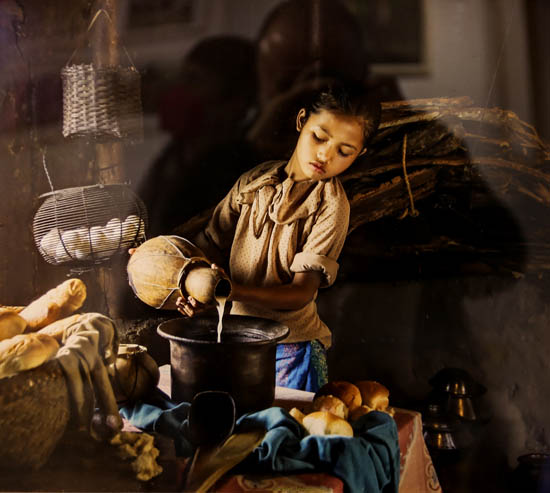
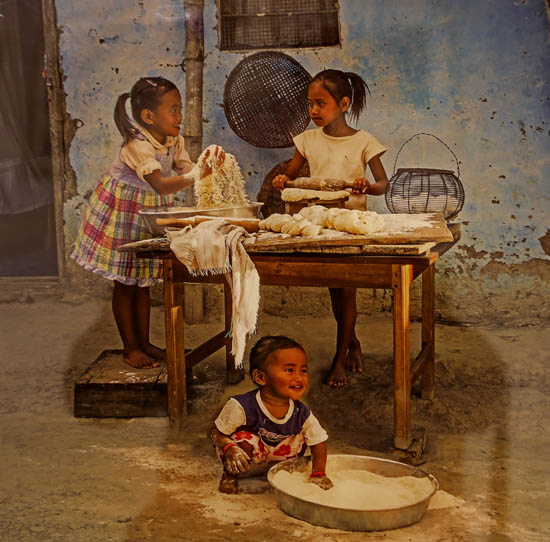
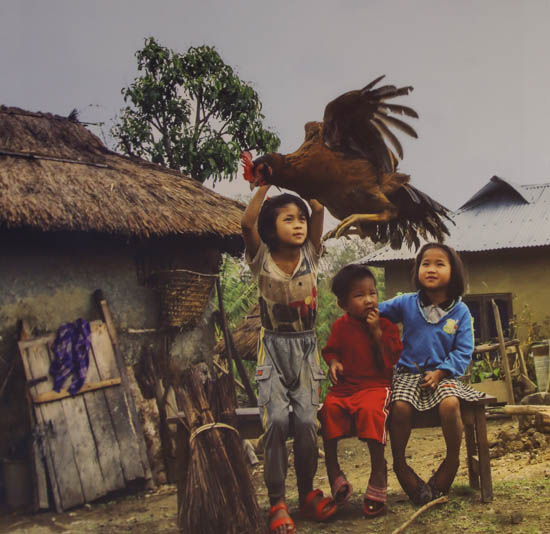
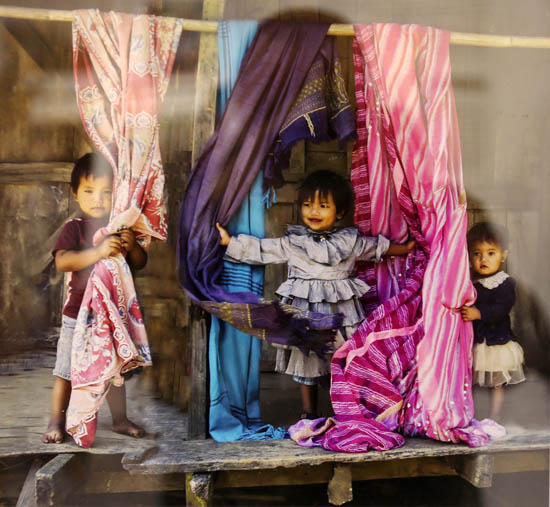
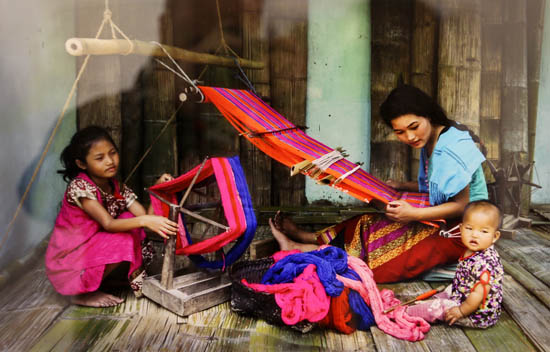
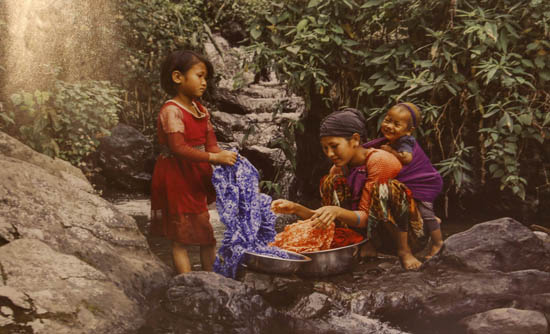

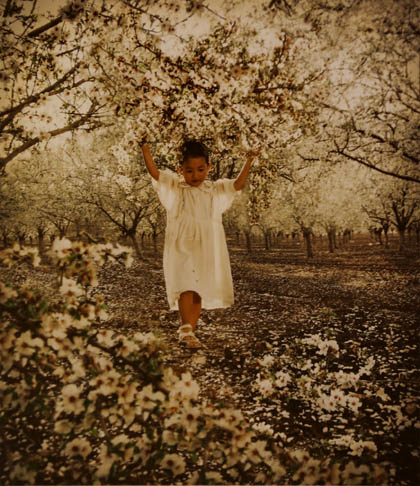

























































No hay comentarios:
Publicar un comentario